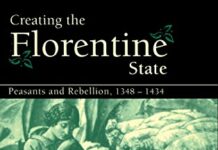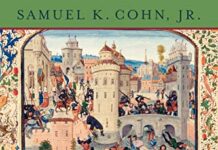
Ebook Info
- Published: 2010
- Number of pages: 340 pages
- Format: PDF
- File Size: 4.66 MB
- Authors: Samuel K. Cohn Jr.
Description
Cultures of Plague opens a new chapter in the history of medicine. Neither the plague nor the ideas it stimulated were static, fixed in a timeless Galenic vacuum over five centuries, as historians and scientists commonly assume. As plague evolved in its pathology, modes of transmission, and the social characteristics of its victims, so too did medical thinking about plague develop. This study of plague imprints, from academic medical treatises to plague poetry, highlights the most feared and devastating epidemic of the sixteenth-century, one that threatened Italy top to toe from 1575 to 1578 and unleashed an avalanche of plague writing. From erudite definitions, remote causes, cures and recipes, physicians now directed their plague writings to the prince and discovered their most ‘valiant remedies’ in public health: strict segregation of the healthy and ill, cleaning streets and latrines, addressing the long-term causes of plague-poverty. Those outside the medical profession joined the chorus. In the heartland of Counter-Reformation Italy, physicians, along with those outside the profession, questioned the foundations of Galenic and Renaissance medicine, even the role of God. Assaults on medieval and Renaissance medicine did not need to await the Protestant-Paracelsian alliance of seventeenth-century in northern Europe. Instead, creative forces planted by the pandemic of 1575-8 sowed seeds of doubt and unveiled new concerns and ideas within that supposedly most conservative form of medical writing, the plague tract. Relying on health board statistics and dramatized with eyewitness descriptions of bizarre happenings, human misery, and suffering, these writers created the structure for plague classics of the eighteenth century, and by tracking the contagion’s complex and crooked paths, they anticipated trends of nineteenth-century epidemiology.
User’s Reviews
Editorial Reviews: Review “[An] excellent study…It will have broad appeal for those interested in the history of plague or responses to epidemic disease, for historians of local government and administration in Italy, and for anyone with an interest in the development of medicine and medical theory.”–Sixteenth Century Journal”Offers a stimulus to more research on the theme of plague, a fascinating topic and already a very lively one among a broad range of historians of medicine, politics, religion, art, and literature.”–Renaissance Quarterly”[An] important contribution…This book is a model of scholarly endeavor: a significant and stimulating argument is informed by rich and detailed research and conveyed in energetic and engaging writing. An indispensable contribution to the field, it should be read by every scholar interested in early modern disease and health.”–Bulletin of the History of Medicine About the Author Samuel K. Cohn Jr. has specialized in the Italian Renaissance, the history of disease, and popular revolt in late medieval Europe. He is the author of eleven books, the most recent of which is Lust for Liberty (Harvard University Press, 2006) and had published essays in the American Historical Review, English Historical Review, Past & Present, Economic History Review, Medical History, Journal of Interdisciplinary History, Les Annales, and Studia Storici.
Reviews from Amazon users which were colected at the time this book was published on the website:
⭐The Black Death struck Europe in the fourteenth century, killing hundreds of millions of people. There was little understanding of even the most basic causes and effects that might have been involved in the spread of the disease. It is not true, however, that the scientific insights about disease that were to start in the Enlightenment and continue to our own times represented the first understanding of the plague as something other than a magical curse or a lesson from God. In Italy, the plague recurred in an epidemic from 1575 to 1578, and during this particular outbreak, people began some primitive but essential epidemiology and even societal treatment. This is the surprising lesson of _Cultures of Plague: Medical Thinking at the End of the Renaissance_ (Oxford University Press) by Samuel K. Cohn, Jr., an astonishingly detailed look at the beginnings of an intellectual revolution. The author, a specialist in the Italian Renaissance and in the history of disease, reminds us that there was “no simple binary progression from a supposed premodern to modern medical thought.” The doctors, medical workers, and even gatekeepers in the middle of the plague in Milan, Padua, and Venice observed, looked at the illness in new ways, and wrote about what they saw.The writings are essential to Cohn’s study, and represent a basic shift in the way the plague was documented. Barber-surgeons might write about the plague, and drug-sellers, merchants, lawyers, artisans, clerics, and minor officials all got into the act, a printed resource which Cohn has mined as the bibliographical backbone of his book, “a wide spectrum of authors from cardinals to cobblers, in prose and verse.” The tracts from this time were not just in academic Latin but in the vernacular. Now doctors had a new confidence, and it was gained in part by disregarding ancient teachings. Experience and even experimentation began to be stressed. It seems like a small step, but doctors began documenting that mortality was occurring within households, getting an idea of the concept of contagion and disease transmitted from one person to another rather than being “miasmic,” transmitted by air that was somehow bad. There were attempts to explain why the poor were disproportionately affected. One author wrote that plague struck the lower classes because they were “forced to eat bad and corrupt food, stinky bread, grass, and unknown roots”. The poor could not count upon clean water; polluted water began to be recognized as a cause of disease. The poor lived in filth; there was lack of plumbing in their houses, buckets of excrement were kept under the beds, the windows (if any) were sealed, and dirt accumulated. Seeing the social effects of the plague in this new way resulted in new ways of treatment. “To judge from their published treatises,” writes Cohn, “the crisis of 1575 fundamentally altered doctors’ approach to and thinking about plagues from the individual patient to the community.” The causes of plague were social, so the solutions had to be political. Recommendations were made about how the cities ought to issue decrees about administering the sick, building new hospitals, enacting quarantines, cleaning the streets, executing those who dealt in infected goods, and other public measures. At least some of these decrees were put into action, and in addition, charity to improve the lot of the poor was enforced. There was a place for religious processions and other ceremonies, but secular governments were in charge of making practical changes. The point of view developed in this outbreak attributed any triumph over disease to rulers and civil servants, the subjects of many subsequent literary celebrations.Of course the doctors and citizens had no real knowledge of the disease roles of rats, fleas, and _Yersinia pestis_, but the capacity to look at clinical evidence without the burden of forcing it into ancient medical theories did enable some important changes, and was a foundation for better understanding as the centuries went on. Cohn, in an erudite and beautifully organized book, has cited a multitude of tracts, and quoted many of them here to show the beginnings of these initial ideas about how governments should involve themselves in the administration of health procedures for their citizens. Four centuries later, we are still trying to answer the same question for our own times.
⭐
Keywords
Free Download Cultures of Plague: Medical Thought at the End of the Renaissance 1st Edition in PDF format
Cultures of Plague: Medical Thought at the End of the Renaissance 1st Edition PDF Free Download
Download Cultures of Plague: Medical Thought at the End of the Renaissance 1st Edition 2010 PDF Free
Cultures of Plague: Medical Thought at the End of the Renaissance 1st Edition 2010 PDF Free Download
Download Cultures of Plague: Medical Thought at the End of the Renaissance 1st Edition PDF
Free Download Ebook Cultures of Plague: Medical Thought at the End of the Renaissance 1st Edition

